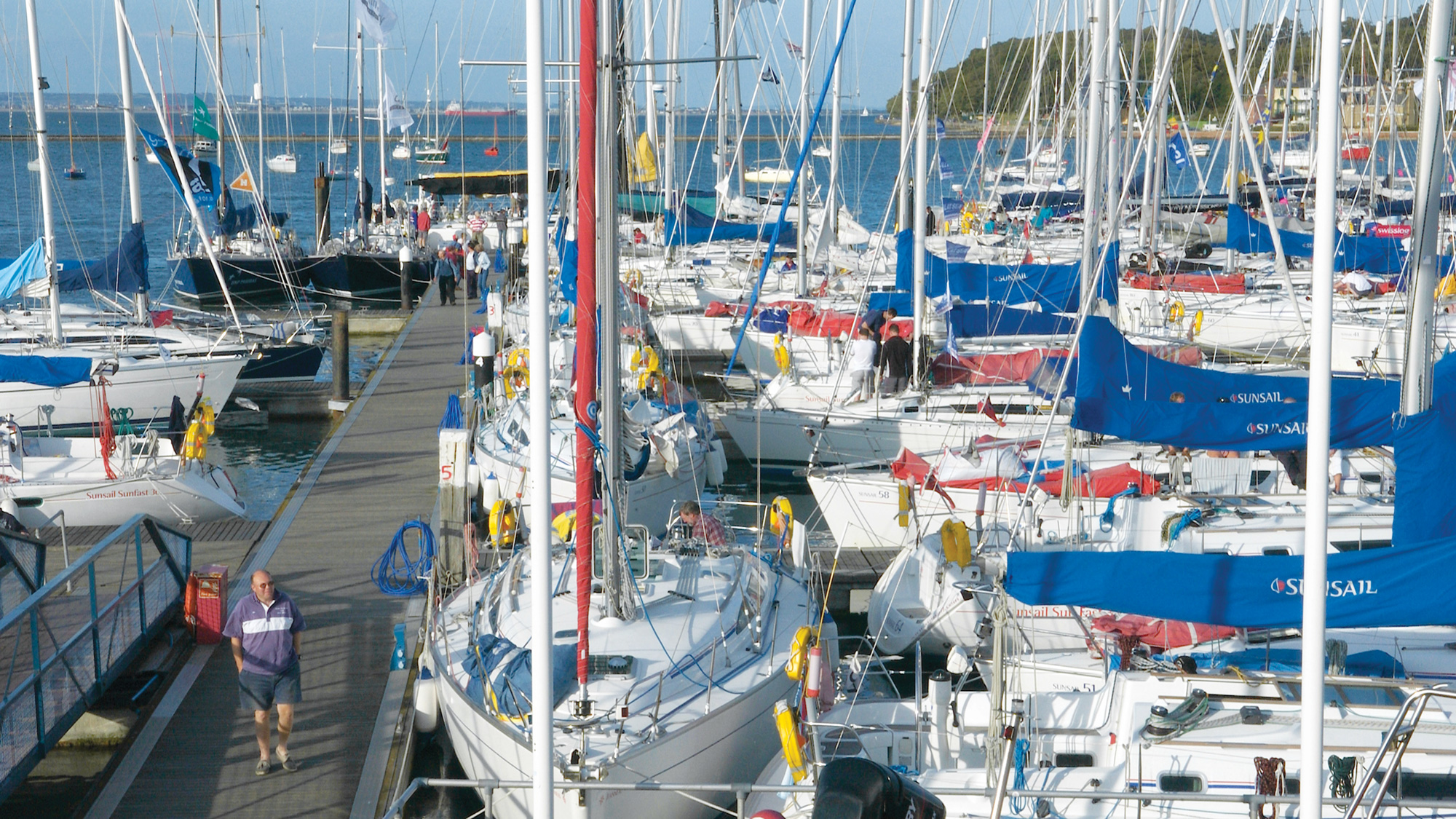James Stevens considers a problem sent in by a Yachting Monthly reader who wants to know how to get a yacht out of a tight berth
Tide Race is an 11m production GRP yacht with a fin keel and a fixed three-bladed prop. While giving plenty of power, the prop also gives a substantial kick to port when engaged astern. Alex the skipper, who has owned the boat for a year, is gradually mastering this effect and how it influences boat handling in a confined space.
Tide Race is currently moored alongside a pontoon in a small recess in a marina which is normally reserved for yachts being craned out or masts being unstepped. There is no boatyard activity for a couple of days so Tide Race has stayed there for the night, starboard side-to.
It was a snug spot when they arrived with the wind blowing offshore. However, overnight the wind has veered to the opposite direction and is now blowing into the recess at about 10 to 15 knots.
To make manoeuvring out of this berth more difficult, a large motor yacht has arrived and moored on the pontoon at right angles to the Tide Race’s bow, and an immaculately restored wooden classic yacht is berthed at right angles to the stern. The only way out is between these two vessels.
Alex is a Yachtmaster Coastal with a few years’ experience and he has two crew who sail with him regularly. There is no one on board either of the two boats pinning him in. How does he manoeuvre his way out?

How you can get your yacht out of a tight berth
There are two answers to this question and the choice depends on the competence and confidence of the skipper/helm.
The quickest way out is to fender the starboard bow well, motor ahead against a headspring on the bow with the helm to starboard. This will bring the stern out to at least 45° or more. Then it is time to give a big burst of astern to make full use of the prop kick, slip the spring and steer astern out of the gap. The stern will tend to find the wind and the bow will blow downwind, assisting the exit. In the hands of a skilled boat handler this looks easy but it is not going to work unless the helm knows how much kick there is, and the penalty for misjudgement is a collision with the classic. Prop kick or prop walk is really useful in a confined space, providing you know what is going to happen.
The safer and easier option is to fender the yacht well and warp it alongside the classic yacht by hand. This requires careful organisation and use of lines and fenders on the pontoon and alongside the yacht – not easy with the wind blowing onshore. Take it slowly and wait for the lulls in the wind.
When ready to slip, release all the lines and a short burst of astern will lift the stern to port and the rudder should start taking effect before long.
Enjoyed reading this?
A subscription to Yachting Monthly magazine costs around 40% less than the cover price.
Print and digital editions are available through Magazines Direct – where you can also find the latest deals.
YM is packed with information to help you get the most from your time on the water.
-
-
- Take your seamanship to the next level with tips, advice and skills from our experts
- Impartial in-depth reviews of the latest yachts and equipment
- Cruising guides to help you reach those dream destinations
-
Follow us on Facebook, Twitter and Instagram.

Leave a Reply